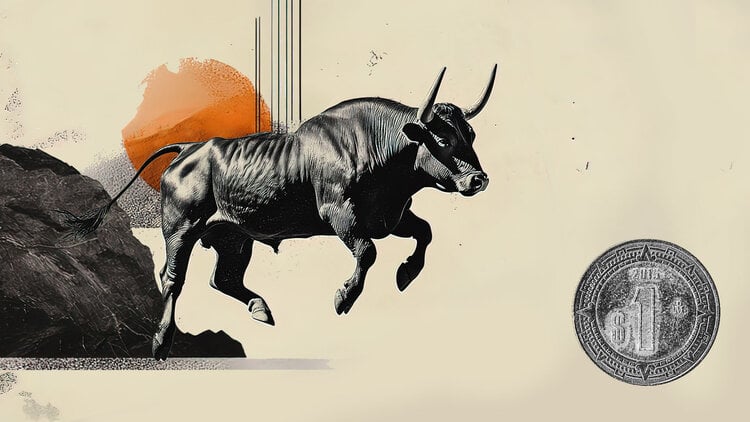We are also losing the butterflies: symbol of grace, beauty, spring. Italywhich enjoys one of the highest concentrations of butterfly varieties in Europe with about 37% of the continent’s total speciesin the last few years it has lost more than half, in line with a world trend that shows no signs of decreasing. For this the World Sustainability Organization – NGO that already works to protect endangered habitats and endangered species with conservation and awareness projects and sustainability certifications Friend of the Sea And Friend of the Earth – just started a “Global census of butterflies”: asks all of us to photograph the butterflies we meet and send a photo (details are on friendoftheearth.org), to collect valuable data for scientific databases and new protection projects. We will also talk about this next March 26 at Collodi butterfly house: an informative day to spend between meetings with experts, activities for children, visits to this wonderful place populated by hundreds of species from all over the world that live in their habitats and which for years has been carrying out educational and awareness-raising projects.
There naturalist Clarissa Puccioniwhich is the responsible for the Friend of the Earth project dedicated to the protection of butterflies, he explains how vast and wonderful their world is, what threatens them, what we can do to help them immediately.
«Those of butterflies – says Clarissa Puccioni – are a world that includes 180 thousand species including moths. They are part of the order of the epidoptera, a very varied group and the most diversified after the beetles. Between them, in fact, they are very different: first of all the butterflies are very colorful and are diurnal, while moths have more camouflage colors and they tend to be nocturnal. They also have extremely different dimensions: for example theOrnithoptera alexandrae is the largest butterfly in the world with a wingspan of 31 centimeters, while the smallest, the Brephidium exilis, has an opening of just one centimeter. Among the moths, however, we go from 3 centimeters of Nepticulidae at 31 centimeters fromAttacus Atlas. On average they live about a month, then there are butterflies, like ours European lemongrasswhich can live up to a year “.
Why does Italy boast such a huge variety of butterfly species?
“Because ours is a country that offers different types of habitats between mountains, hills, wetlands, sea and countryside: of the more than 400 European species in Italy there are 289. We are in second place after Turkey, which has 380”.
What role do butterflies play in the ecosystem?
«Both butterflies and moths play an important ecological role. They are in symbiosis with nourishing and flowering plants, therefore they are important pollinators but also natural bioindicators: if in a habitat of an inaccessible area, for example mountain, a decrease in the number of butterflies is found, it means that there is an environmental problem “.
What is the difference between the role of butterflies and that of bees?
«Bees live in complex and organized societies even if there are solitary bees. During the day they pollinate many flowering plants but above all both wild and horticultural fruit trees. Butterflies, on the other hand, are always solitary (some gregarious but not in society) and pollinate many wild plants and of agricultural origin, both day and night as regards the moths. However, we are talking about a high percentage of species: 90% of wild plants and 75% of agricultural crops depend on butterflies ».
What is happening to the butterflies?
“We have lost 73% of the world population in the past 10 years, and have seen a mass displacement of those left due to global warming. The rise in temperature leads the butterflies to look for larval plants further north: those that were once typical of the Mediterranean now live in Great Britain and in turn those of Great Britain are moving ”.
What are the main threats to their survival?
«First of all anthropic interventions such as intensive agriculture and then the use of pesticides and chemicals in the fields, then the reclamation of wetlands and urbanization in general. Then there is another reason: also the abandonment of rural areas, and therefore the reforestation of areas previously inhabited by man, affects the reduction of butterflies, because it determines the disappearance of plants they need to live. There are in fact cases in which human intervention is important for the survival of butterflies. Another example is the Lycaena disparwhich is one of the endangered species, whose survival is determined by cyclical (i.e. dictated by the seasons, ed) and traditional (i.e. manual, ed) mowing of agricultural land: if aggressive mowing mechanisms are used, for example tractors that emit a considerable quantity of nitrogen oxides, polluting the environment and the surrounding atmosphere, upsetting the balance of the soil’s microclimate, the plants that guarantee their survival are lost ».
What are the consequences of the decrease in butterflies?
«If the plant disappears, the butterfly can disappear and an imbalance is created which has its effects on a small and large scale. In the first case, an example of symbiosis is that of Cassandraan endemic species of Italy, with thearistolochia, which is a plant that usually lives in humid soils, at the edge of rivers: the Cassandra is disappearing because it has no more place to feed or lay its eggs since the aristolochie are uprooted to control the banks. On a large scale, given that the survival of a large part of butterfly species is linked to that of agricultural crops, especially vegetables, the effect is a decline in production. If all the butterflies and all the bees disappeared in supermarkets, there would be 70% less products ».
What does agriculture do to help them?
“By now, various companies are interspersed in the field of wild flower hedges, such as wild rutaceae, cornflower and thistle, which help to support the butterfly populations: generally they are companies that have long been following the path of sustainability”.
Why producing sustainably is also good for butterflies?
“Because sustainable agriculture, and therefore organic, does not impact biodiversity: it uses biodegradable and natural pesticides, works the fields in a traditional and therefore non-aggressive way. All this guarantees the natural survival of plants and flowers, and therefore also of butterflies ».
What are the projects of the World Sustainaibility Organization and Friend of the Earth to protect butterflies?
«The WSO certifies products from sustainable agriculture and farming all over the world, attributing the Friend of the Sea and Friend of the Earth labels. These certifications guarantee that a company operates respecting nature, and therefore guarantees the survival of all species, including butterflies. Furthermore, the census we are carrying out is one of our many projects for the protection of endangered species, with which we aim to raise awareness but also to do their part to help us collect valuable data. To date we have received 1500 photos from 33 different countries, which we use to identify species and then collect data which we then share with scientists around the world ».
What else can we do?
«To guarantee in our little one a welcoming habitat for native butterflies: for example by planting seeds and bulbs of plants from the Italian or European territory in our gardens or on our balconies, which are the ones where they lay their eggs and which they feed on. We should prefer them to tropical ones because they are not the habitat of our species. Furthermore, we should use fertilizers and natural products, even in vegetable gardens. In addition to this it is important to participate in the many projects of Citizen Science that aim to map and protect butterflies: they are used by scientists to collect precious data and then they are also an excellent way to educate children, to leverage their curiosity to make them understand that they have an important role for the future of the planet “.
Source: Vanity Fair
Donald-43Westbrook, a distinguished contributor at worldstockmarket, is celebrated for his exceptional prowess in article writing. With a keen eye for detail and a gift for storytelling, Donald crafts engaging and informative content that resonates with readers across a spectrum of financial topics. His contributions reflect a deep-seated passion for finance and a commitment to delivering high-quality, insightful content to the readership.







